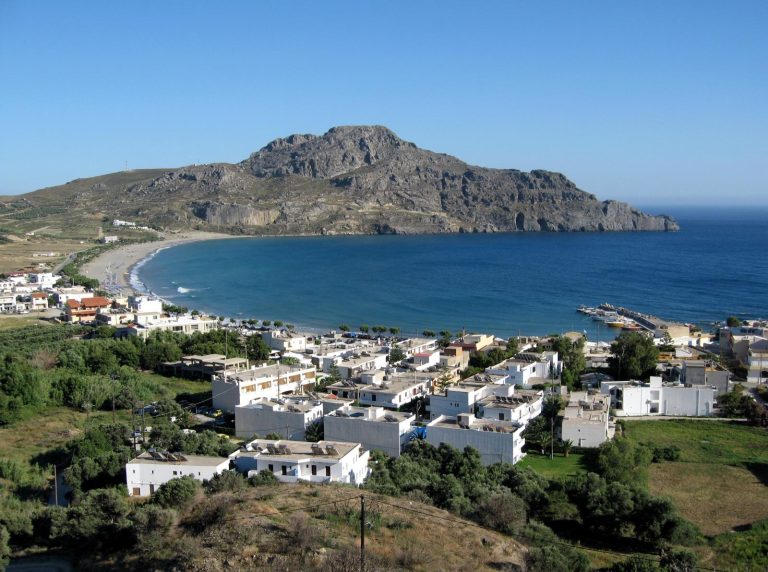
You are using the Free Edition of CreteAPP. For extensive information on Crete, GO PRIME with our comprehensive Greek Travel App featuring the full editions of Crete and 25more Greek islands & Athens.
Plakias is located 36km south of Rethymno, in the fertile valley formed at the exit of Kotsifos river, which has water all year round. Plakias was a small village in the late 19th century, which in recent decades has transformed to a popular resort. Especially, during the 60s, the beach of Yialia, as the beachfront of the wider area is called, was a favorite destination for hippies. Now it’s a popular resort and a base for visiting the natural beauties of the region.
Within short distance from Plakias, you can visit the mountainous villages of Myrthios, Selia and Asomatos, which retain their traditional features and have amazing view to the South Cretan Sea. You can also visit the famous Lake of Preveli, the monasteries of the area and hike in the Gorges of Kotsifos and Kourtaliotis. However, if you prefer to stay in Plakias, you have many choices as the small town is very well organized, hosting plenty of hotels, restaurants, bars, shopping centers, water sports, scuba diving schools, organised beaches, rented bikes and many more. The area has all basic infrastructures such as marina, shops, banks, petrol stations, surgery and dental practices, pharmacy, post office, etc. Lastly, there are frequent bus services from Plakias to Rethymnon.
One of the favorite attractions for visitors of Plakias is the old windmill, which is located 1.5km away from the village. Moreover, in the area of Paligremnos, namely the eastern edge of the long beach, there are some tunnels from coal mines. At this point, which is also called Gonates (i.e. knees), there is a huge vertical cliff, where locals say that the legendary hero Digenis Akritas knelt down and drank water from one of the many springs in the region.
You can also visit the Church of Zoodohos Pigi, which is built on the ruins of an older one, in which the south wall had collapsed. Indeed, there is a legendary interpretation for the collapse of the wall. Once, a pirate ship sailed in Plakias and the pirates chased two young girls. They ran and hid in the church, seeking salvation from Virgin Mary (Panagia). The pirates arrived in front of the chapel and waited for the girls to get out. However, their prays were heard and the south wall was torn in two parts. Then, the girls escaped the church and got lost in the nearby olive grove.
As already mentioned, Plakias is a relatively new village, built in the late 19th century by fishermen that left the village of Sellia and were established here. On the other, villages such as Selia and Mirthios are older, since there are signs dating back in the Byzantine period, when roads and bridges were built to connect them. Although Plakias is a new village, the area was inhabited at least since Roman times, since the archaeologists have found many Roman objects (and some are considered Minoan). It is believed that Plakias is built at the site of the ancient city Lamon, while some others believe that it’s built in the place of the ancient city Phoenix.
Next to Zoodochos Pigi a large necropolis (five acres) with many graves has been found. The graves didn’t have their covering stones. It seems that they were removed to be used for other purposes (construction materials, single curiosity, etc.). The entire hill area is full with orphan covering stones, which were revealed during various operations. Indeed, Plakias name is taken after the large number of stones, which are called “plakes” in Greek. Similar cemeteries have been found in other nearby areas.
Sorry, no records were found. Please adjust your search criteria and try again.
Sorry, unable to load the Maps API.
